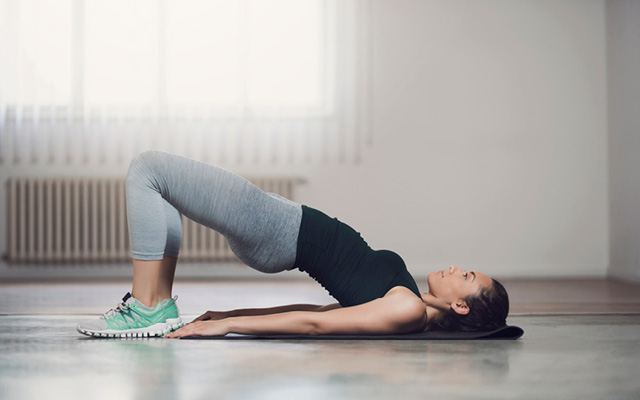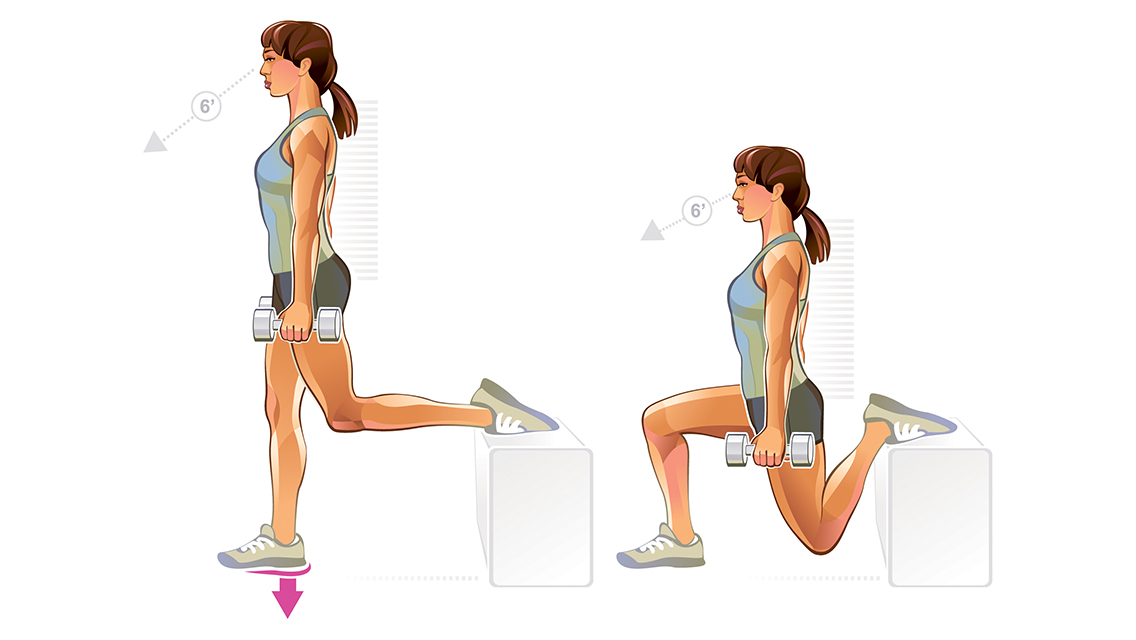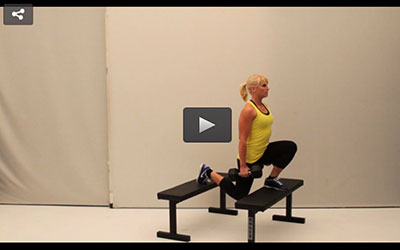Jayne Snyder, PT, DPT, sees a steady stream of patients suffering from pain in their hips, backs and knees at her Snyder Physical Therapy clinic in Lincoln, Neb. She says the majority of these problems stem from one source: weak gluteal muscles. “Even when you think you’re working your glutes, you may be overcompensating with other muscles and setting yourself up for injury,” she explains.
Three muscles — the gluteus maximus, gluteus medius and gluteus minimus — make up the buttocks. The biggest of the three (and, in fact, the largest muscle of the 639 in the human body) is the gluteus maximus, which works to extend and rotate the hips and legs. The gluteus medius is a broad muscle that sheathes and stabilizes the pelvis and core; while the underlying, fan-shaped minimus helps support the hip area. When you run, the maximus propels you forward; while the smaller medius and minimus muscles provide balance and control for your femurs, which help keep your hips, knees and ankles aligned.
That’s the way the glutes should work, anyway. But while they are some of the most important muscles in the body, they’re also some of the most troublesome. Sitting for long periods of time often makes the hip flexors tight and overactive, which deactivates the glutes. (For more on this effect, see “Office Imbalance”.) And even when we’re on our feet, many of the activities we choose don’t get our glutes going. For instance, the short, repetitive movements of a stair climber don’t fully activate the gluteus maximus.
When the glutes are inhibited, a domino effect occurs in the body. “Without the glutes, the psoas muscle, which links the lumbar spine to the legs, jumps in to act as the stabilizer of the body’s core,” says Laura Keller, MPT, a physical therapist at the Stone Clinic in San Francisco. “Unfortunately, an overactive psoas can cause a multitude of dysfunctions, especially by compressing the lower lumbar vertebrae in the spine — one of the more common causes of back pain.”
Weak glutes also cause the hamstring and quadriceps muscles to overcompensate, which can lead to strains, says Jim Thornton, MS, ATC, PES, head athletic trainer at Clarion University in Clarion, Pa. And without a strong, working medius to align the femur, knee and ankle, you’re also more likely to overpronate your feet, which can cause plantar fasciitis (heel pain), Achilles’ tendinitis and shin splints. Inhibited gluteal muscles also lead to tight iliotibial bands, also known as ITB syndrome, and patello-femoral pain, or runner’s knee.
The good news? By learning how to activate your glutes, you can not only prevent such chronic pain and injuries, you can also boost your fitness performance.
A Superior Posterior
“Choosing the right exercises will help you rewire your glutes,” says Diane Vives, MS, CSCS, founder of Vives Training Systems in Austin, Texas. (For exercise ideas, see “Seat Boosters,” below.) Significant strength gains will come from incorporating eight to 12 weeks of such exercises into your regular routine, she adds.
Learning to activate and properly fire your glutes during movement gives you a fresh start in just about any activity, says Keller. Because the glutes play an essential role in many athletic activities, you’ll also find you’re able to run faster, jump higher and lift more. “Once the glutes help stabilize the core, you naturally do all exercises more safely and efficiently,” she says. “Especially those involving precise movements, such as skiing and biking.”
In short, once you get your gluteal muscles in line, your whole body feels and performs better — from top to bottom.
Gauge Your Glutes
Inhibited gluteal muscles can lead to chronic pain and injuries. Jim Thornton, MS, ATC, PES, and head athletic trainer at Clarion University in Clarion, Pa., suggests this self-test:
1. Stand on your right leg on top of a step or small platform, your left leg out in front of you.
2. Slowly bend your right leg, reaching your hips backward as far as is comfortable. If your right leg leans or caves inward at the knee, your glutes are probably weak or inactive. Repeat with your other leg.|
Seat Boosters
Strong glutes not only improve your athletic performance, they also help prevent back and leg injuries and chronic pain. A 2006 study published by the American Council on Exercise (ACE) analyzed which exercises most effectively activated and isolated the gluteus maximus and the gluteus medius. Here are two of the top options:
Quadruped Hip Extension
Start on your hands and knees and contract your abdominal muscles to keep the spine in a neutral position. Keeping your left knee on the mat and your right knee bent at 90 degrees, slowly lift your right leg until the bottom of your right foot is pointing toward the ceiling and your femur (thigh bone) is aligned with your spine. Slowly lower your right leg. Repeat on the same side for a total of 10 reps; switch sides and do 10 reps with the left leg.
Front Lunge
Standing, hold a lightweight dumbbell in each hand, and step forward with the left foot, keeping your head up and your spine neutral. Drop your right knee toward the floor by bending both knees; make sure to keep the left knee directly over the center of the left foot. Push down and forward through your left heel to return to the start position. Repeat on the other side; alternate for 10 reps per side. (For additional form tips, check out “Fitness Fix: Lunge With Confidence”.)|
Related Content
Build your glute strength with these following exercises:
The Sumo Squat
Bulgarian Split Squat
The Romanian Deadlift
The Glute Bridge
The Lunge




This Post Has 0 Comments